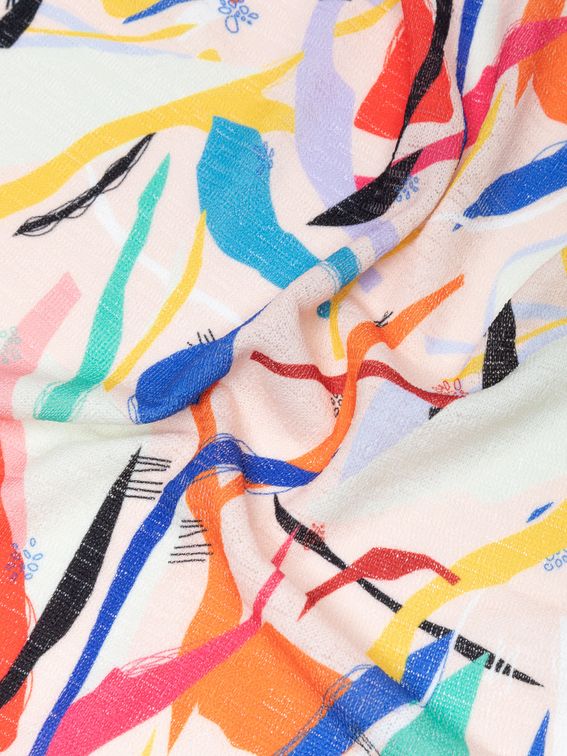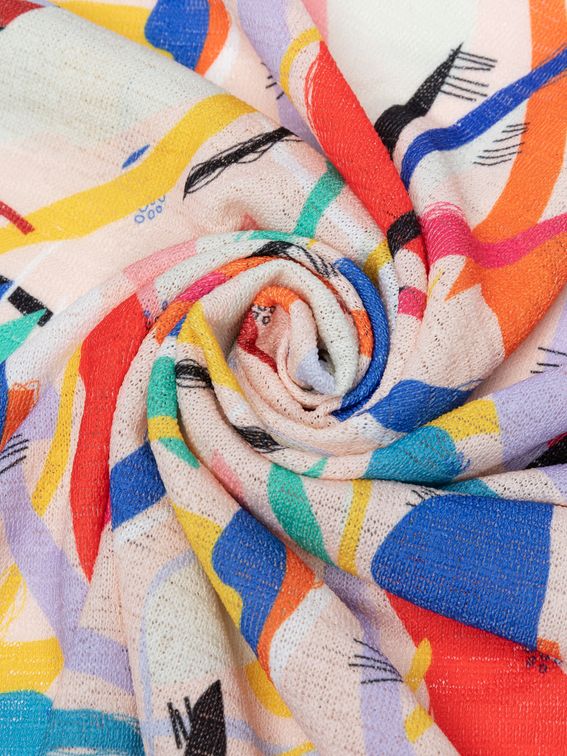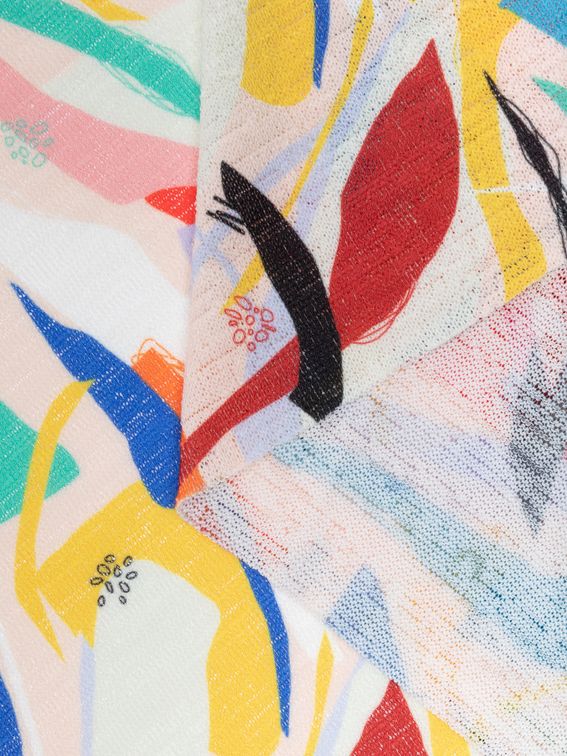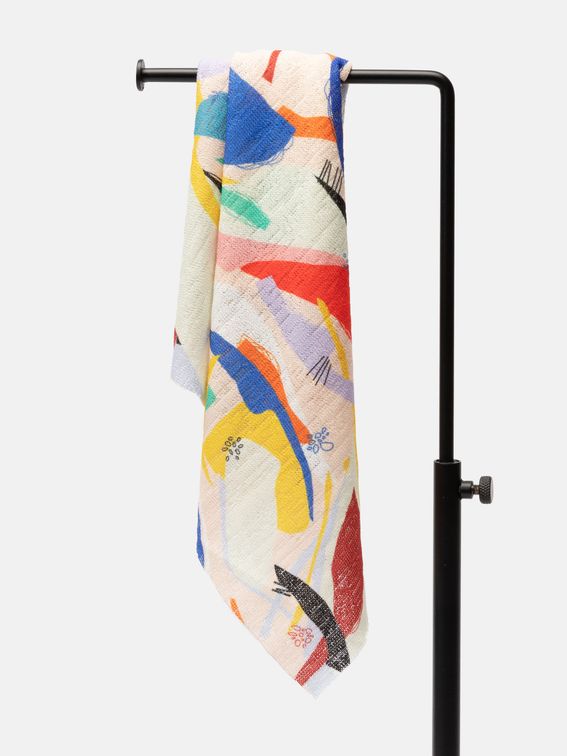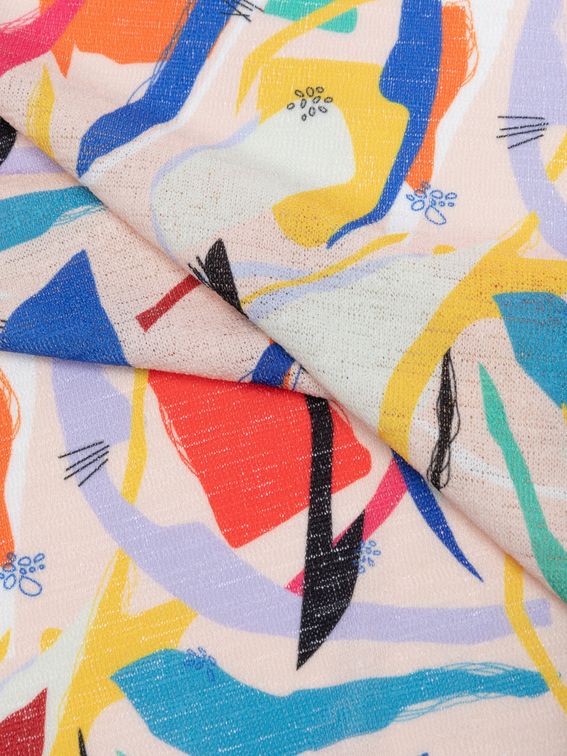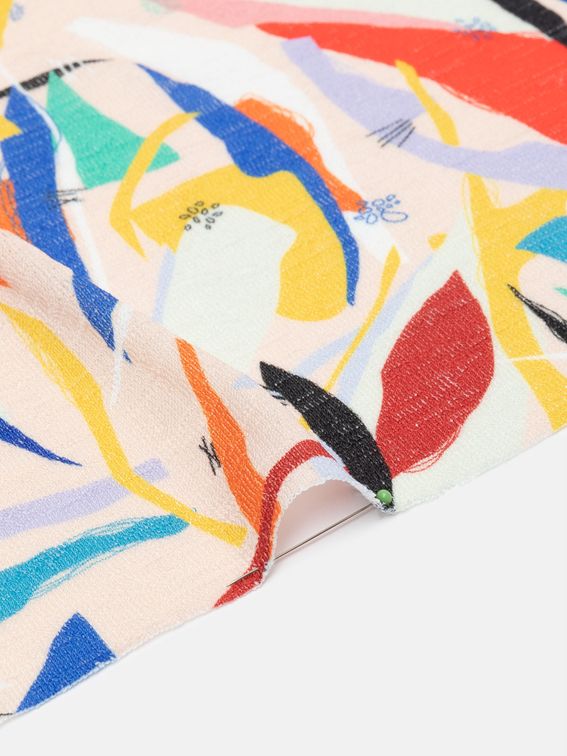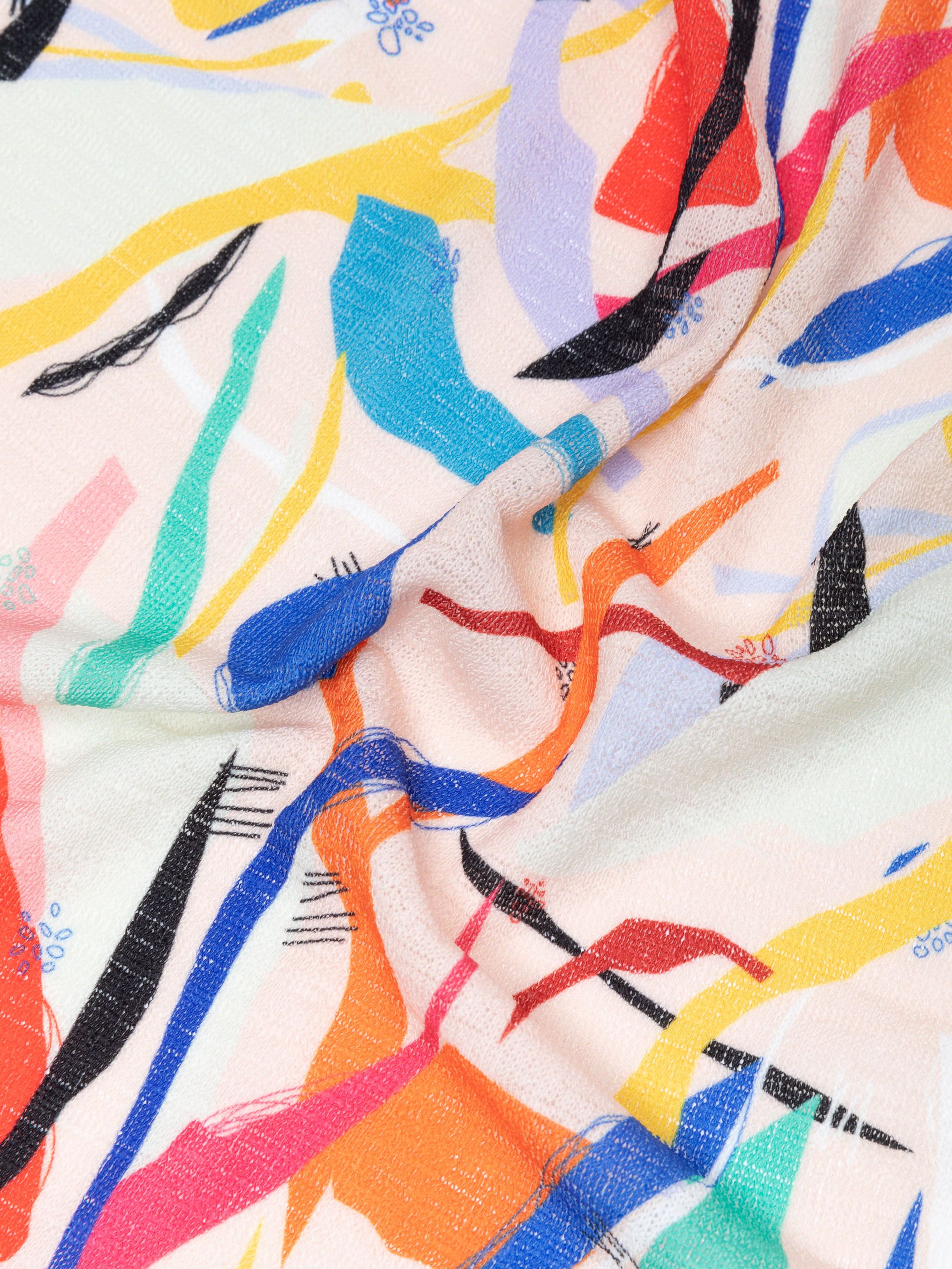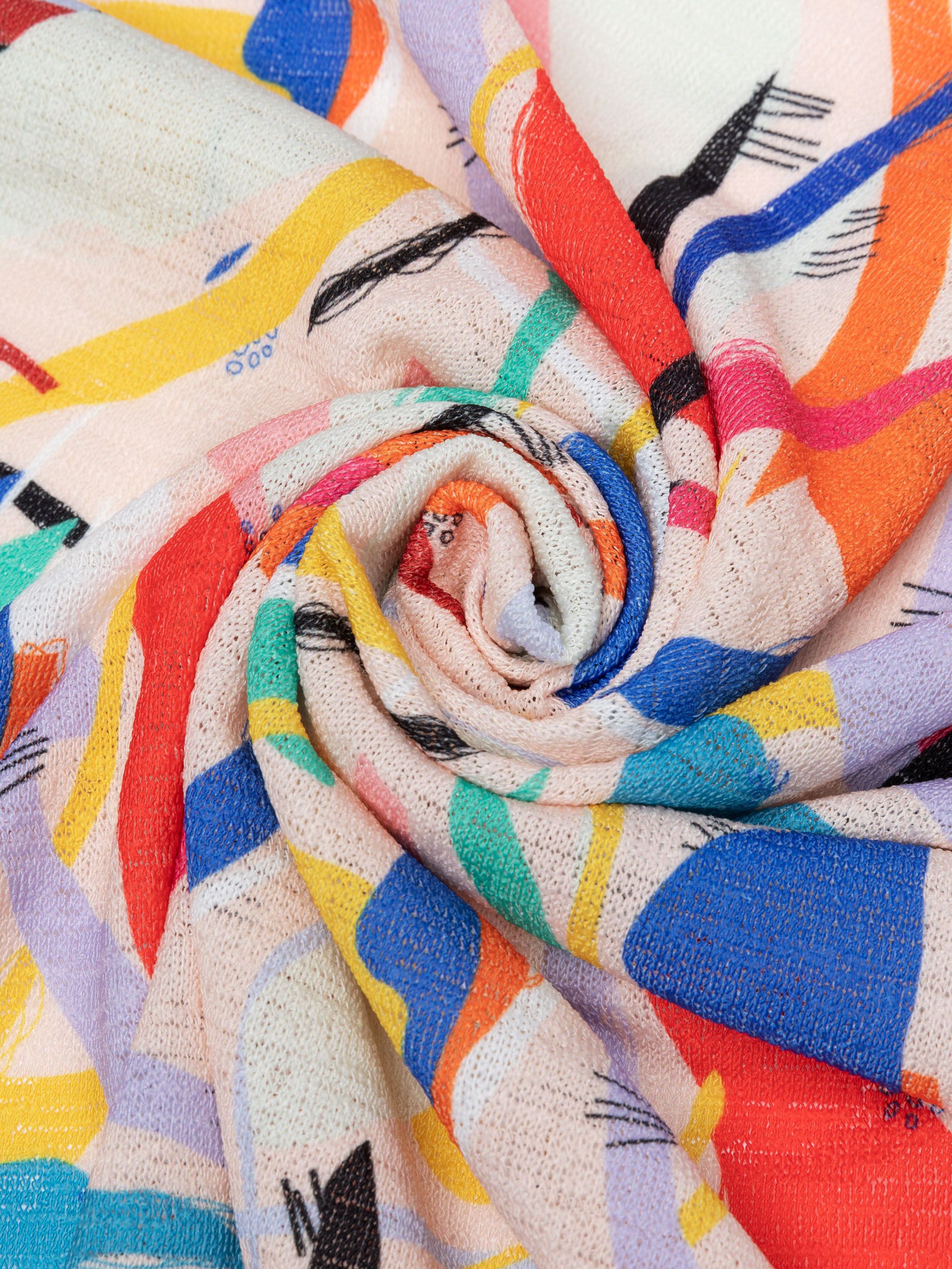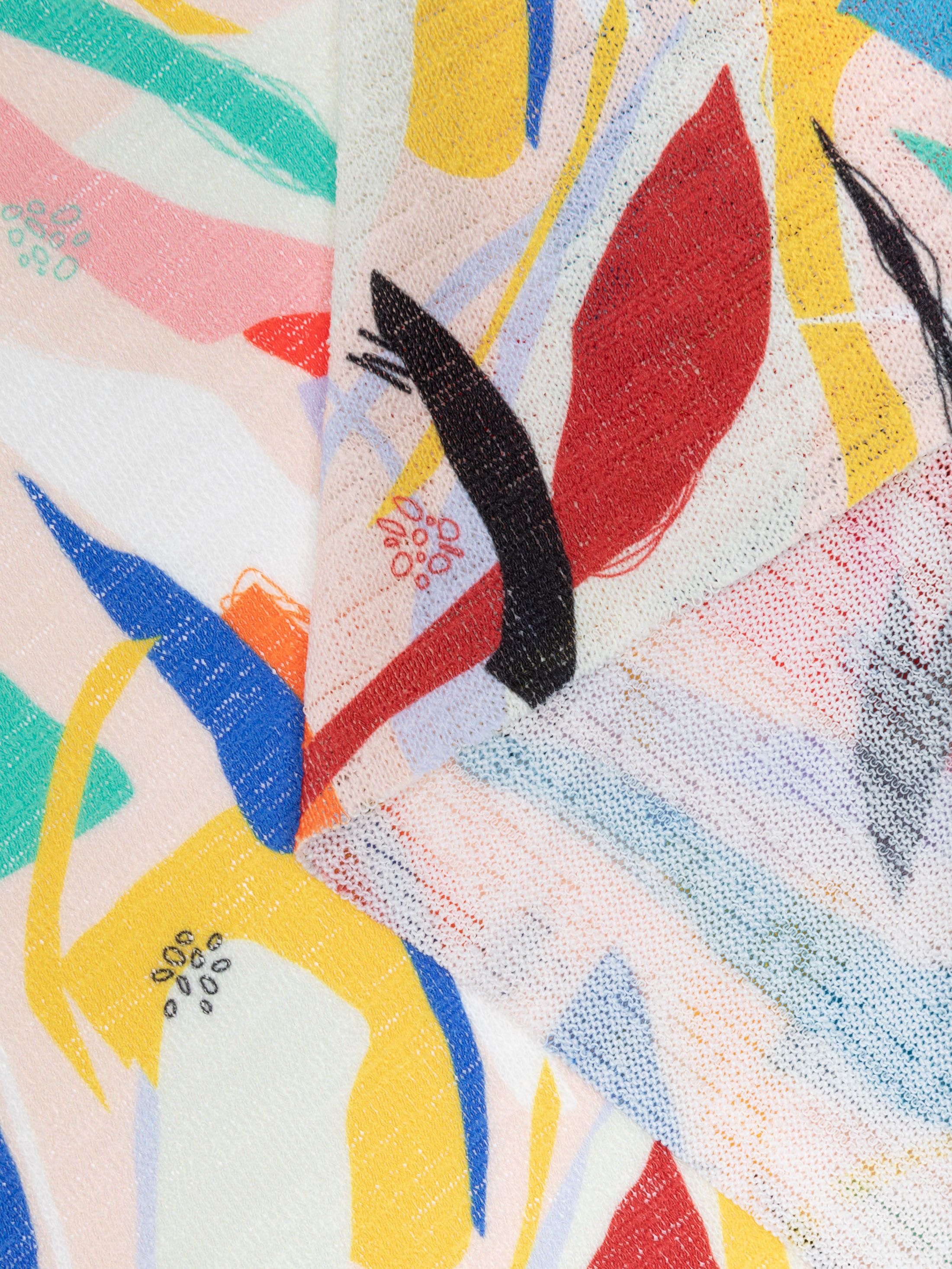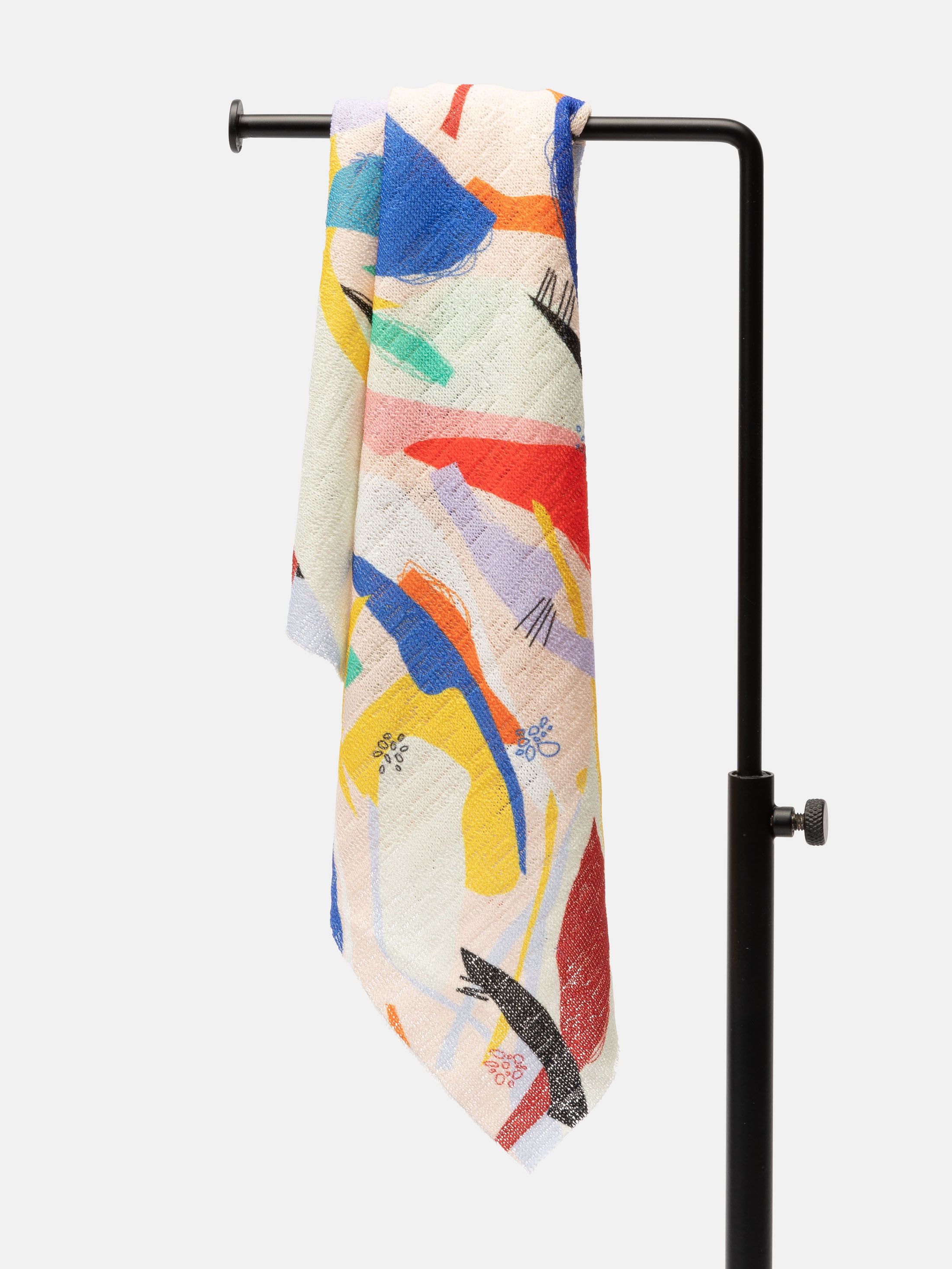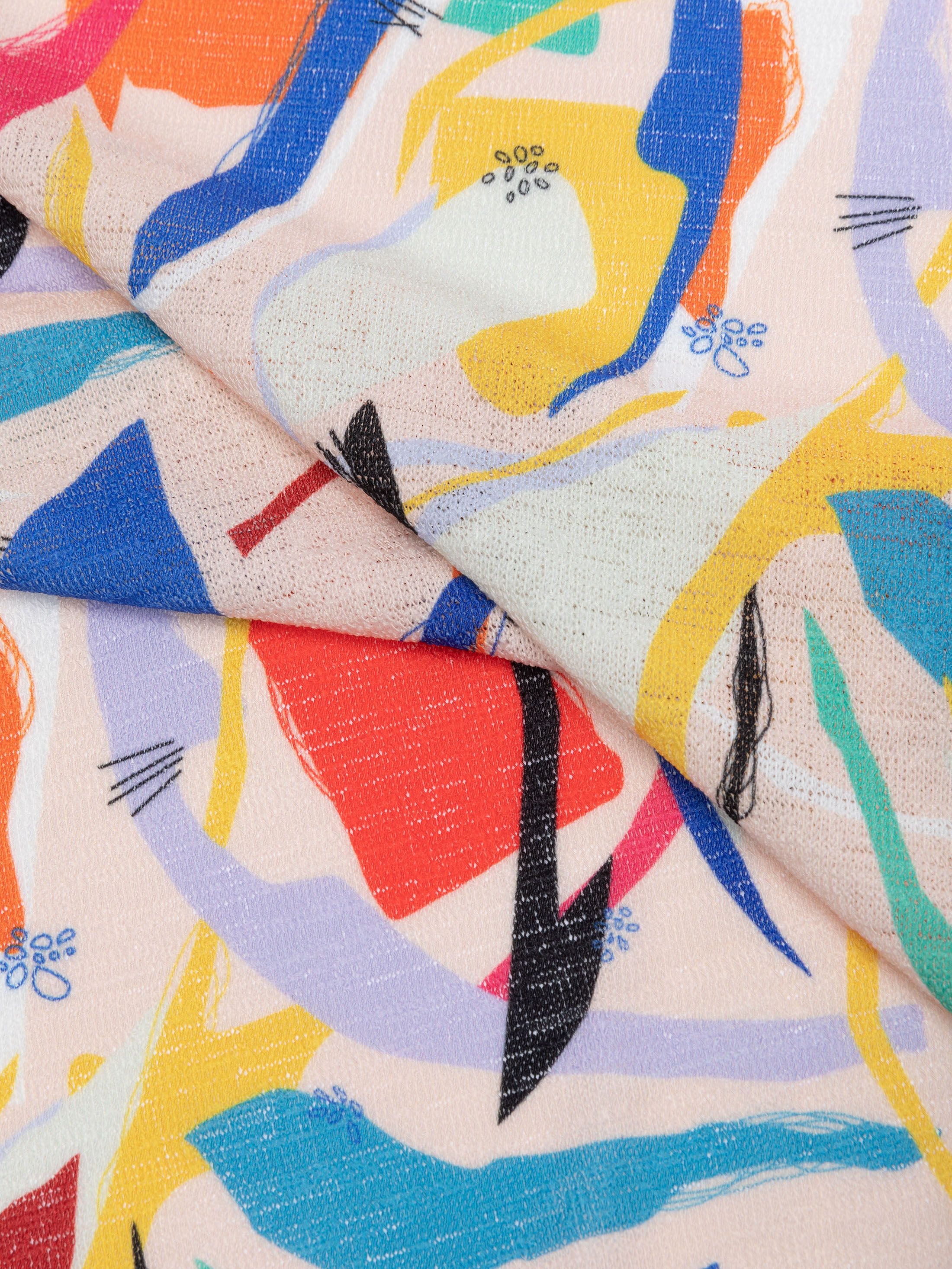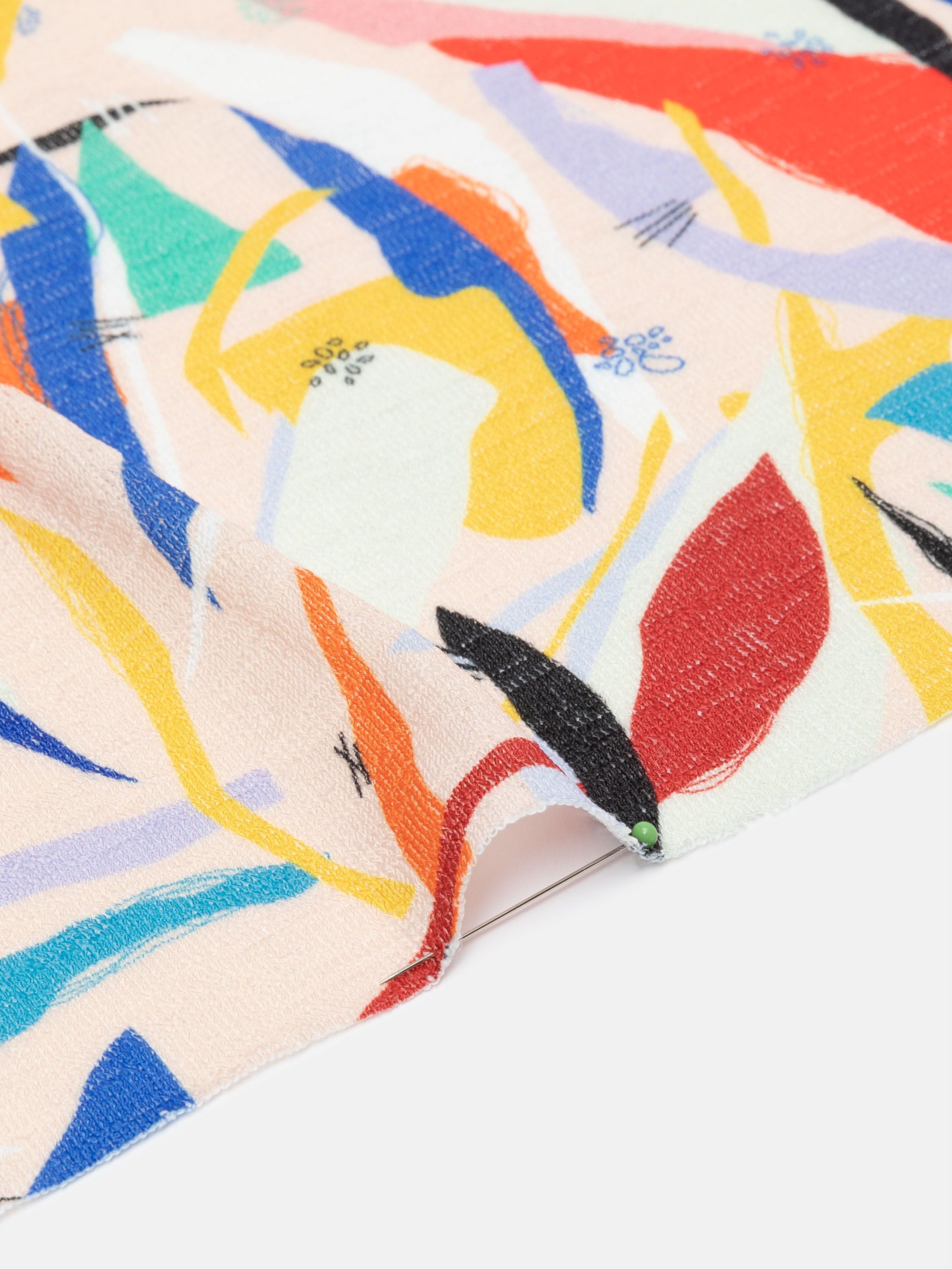Custom Print on Jersey Knit Fabric
From €23.98
95% polyester 5% elastane
1.44m Max Print
Sublimation inks
185gsm
Crafting
Oeko Tex Standard 100 fabric
Hemming Available
Sustainably printed
Explore our

Swatch packs and colour charts available for as little as €1.50 with express delivery
Order a swatch packProduct Description

Care instructions
Wash at 30°c, low tumble dry heat, hang to dry, do not wring, low heat iron.
Not sure if this is the right fabric or need some more inspiration?
Order a fabric test print €19.95How it works
Upload your design
We automatically apply your design to the product you selected
Make it perfect
Use our smart tools to get it exactly right and select the finishing options
Preview & checkout
Confirm your designs with our 3D previews and checkout with confidence
1-2 Days Production
Sit back and relax. Your product is on its way!
How our pricing works
Standard fabric sizes
Our pricing is based on the quantity and dimensions of the products you order. The more you order, the better price you’ll get. We also offer lower pricing for larger dimensions, students and wholesalers.
Finishing price list
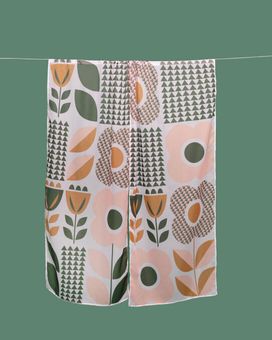
We have a full Cut & Sew service here at Contrado, and are able to hem your fabric prints for a small additional charge per metre.
- Folded hem (range of 8 thread colours)
- Overlock hem (range of 8 thread colours)
- Cut on the line
- Pinked edge
You can choose to have your prints hemmed with either black or white thread. The hemming material allowances can be found in our Print guidelines & finishing section of our FAQs.
View our full FAQsWe offer discounts
We offer discounts on all our products, including bulk, quantity and student discounts. Enjoy great deals whether you're a small business, designer, or student.
|
Volume in
sq m
sq m
sq yds
|
Price | Discount |
|---|---|---|
| <= 0.5 sq m | € 23.98 fixed | 0.0% |
| 0.5 - < 1.0 sq m | € 47.95 /sq m | 0.0% |
| 1.0 - < 3.0 sq m | € 47.95 /sq m | 0.0% |
| 3.0 - < 10.0 sq m | € 41.00 /sq m | 14.5% |
| 10.0 - < 20.0 sq m | € 40.00 /sq m | 16.6% |
| 20.0 - < 30.0 sq m | € 39.00 /sq m | 18.7% |
| 30.0 - < 40.0 sq m | € 38.00 /sq m | 20.8% |
| 40.0 - < 50.0 sq m | € 37.00 /sq m | 22.8% |
| 50.0 + sq m | € 29.00 /sq m | 39.5% |
** For larger projects or custom inquiries, please contact us.
Delivery time & costs
Custom Print on Jersey Knit Fabric
From €23.98
95% polyester 5% elastane
1.44m Max Print
Sublimation inks
185gsm
Crafting
-
Oeko Tex Standard 100 fabric
Hemming Available
-
Sustainably printed
Explore our

Swatch packs and colour charts available for as little as €1.50 with express delivery
Order a swatch packHelp
Digital Printing on Jersey Knit Fabric
Print your artwork digitally onto this soft and stretchy loose jersey knit. With breathable and moisture-wicking properties, this beautiful jersey will be a staple for your summer garment projects. Made to order by Contrado.
Surface textures
This jersey knit fabric is very soft and has a wonderful drape. It contains 5% elastane and as such has a 4-way stretch with a very good recovery rate. The patterned construction is somewhat random, and the yarns can appear dense in some areas and sparse in others. This gives it a unique "homespun" appearance which adds to the character of the fabric.
Print detail
Your jersey knit fabric is a soft and stretchy fabric with a good weight and a breathable construction. The base tone is a warm white, which is a good canvas for colour and print. Because of the uneven construction, the yarn pattern can make print details ever so slightly soft, particularly when overly stretched. We recommend using bolder prints for this jersey.
Usage
The soft, stretchy and breathable qualities of this jersey knit makes it a great choice for a wide range of garments. Because it is soft, moisture-wicking and has such a lovely drape, it is the ideal textile for making light summer clothing. Think lightweight sweaters, knitwear and cardigans, or maybe even an oversized loose knit summer blazer.
Print Guideline
What's the best resolution to print in?
We print at 200dpi, which is a good combination of quality and file weight. Ideally, your image should be scaled to 100% at 200dpi; this means that no resizing of your file occurs, preventing any interpolation. Our design interface will have a quality marker next to the design that you have uploaded, this will change colour using a traffic light system and display a message. The message will let you know if the resolution is too low or if you have a good quality image.
Which colour model should I choose? RGB or CMYK?
We advise providing images in the RGB colour space. Specifically using the sRGB image profile, to achieve best colour results.What does this mean? In your editing software choose RGB as the working space, and assign the image profile as sRGB (full name sRGB IEC61966-2.1)
Maximum dimensions
There is no limit on the length of the fabric that you can order. We have a preview design window set up to 5m max to visualise the print, but that's not a print limit. If you'd like to order more, you can increase the quantity (x2 for 10m or x 4 for 20m for e.g.) and then your orders can be as long as you'd like, with a built-in automatic volume discount too. The maximum print width of each fabric can be found on the individual fabric pages or in our design interface.
Do I need to incorporate white space within my design if I want a border or some cutting space?
Yes, that might help you. Always incorporate any extra space or borders into your purchased fabric size. We trim squarely around fabric samples and fabric prints, leaving approximately 5mm white space. Cutting neatly on the line has an additional fee.
What is crocking and why might it occur?
Crocking, which is fading along the creases, often after washing or heavy use, occurs when you digitally print on natural fabrics - more so when dark or dense colours are used. It can be minimised by using a cool hand wash instead of machine washing as the tumbling of the machine is the main cause of this. To avoid entirely, we would advise using a poly fabric.
Do you print on fabric a customer supplies?
Unfortunately not; we like to test meticulously so that we know what gets best results on our fabrics, and our facilities cater perfectly to them. We do however print sublimation paper to order, and if you have access to a heat press you can press your own fabrics easily.
Should I save my file as a TIFF or JPEG?
For multi-coloured or very detailed files we recommend using a tiff format, but they must be flattened. For simple colours and low detail files, a jpeg is fine.
What is the situation with material shrinkage?
Just like many fabric printing processes, there is the potential for shrinkage. Depending on the fabric, please expect and allow between 2-8% shrinkage which you need to plan for in your dimensions. This percentage can vary from print run to print run and between fabrics so we would advise ordering a little more material than you require for your project.
Can I print on both sides of the fabric?
We do not offer to print on both sides of the fabric. A lot of our fabrics are semi-transparent or have some show through and this wouldn't work with double-sided printing. This is not a service that we offer on any of our fabrics.
Can I order labels in another fabric? Will you cut them like you do with the normal fabric labels?
At the moment no, our labels are all printed on the same satin fabric. We may introduce more in the future, but for now, this is the best choice. The labels are all cut the same way. You can order the fabric of your choice and make the labels yourself, but we do not cut different fabric into label format.
How is your fabric printing eco-friendly?
With environmental consciousness in mind, our fabrics are all printed using completely water-based inks. This means no chemicals or solvents are used. Our heat fixing procedure fixes the colours and prints, avoiding the downsides of steaming, such as excess or contaminated water returning into the waste system. We have one facility where we conduct all the printing, production and fulfilment. Rather than roll the fabrics and send them in a tube, we fold them before they are sent out to you. This saves over 150 tubes a week, as well as a lot of space on the delivery van. (For delicate fabrics we ensure to package appropriately).
How will my image scale?
When you upload your design our system will automatically scale it to fit your chosen fabric dimensions. In the 'Product Options' tab, the displayed dimensions under 'Print Size' will show the dimensions of the piece of fabric that you are ordering. For image/design dimensions you need to see the 'Images and Text Tools' tab. You can see and edit the dimensions of the image under the quality information next to the thumbnail.
Why are there slight colour differences between my orders?
We work at improving our colour profiles all the time. Though rare it may happen that from one print run to another, and there could be slight colour differences, this is normal and part of the process when we are constantly improving. It is extremely unlikely that there will be a huge difference (like orange instead of red for example). Please bear in mind such colour variations can be intensified from fabric to fabric due to the varying grains and textures of the fabric.
Sizing For Hemming And Shrinkage
We have a full Cut & Sew service here at Contrado, and are able to hem your fabric prints for a small additional charge. We create a small one- or two-fold hem that typically uses 5 to 20mm of material, depending on the thickness of the fabric. So, for example, if you want a finished piece of fabric that measures 100 x 100cm, you will need to order a size of 101.5cm x 101.5cm to allow for the hem (on top of that please also allow for shrinkage of min 2%). The thicker the fabric, the bigger the hem will be. You can choose to have your prints hemmed with either Black or White thread. On our silk and other light woven fabrics, one hemmed edge will be straight (vertically down the roll) and the other will be slightly rippled. The hemming material allowances are as follows and you need to make your print bigger to accommodate the hem:
- Light Fabrics (20-100gsm): For silks and other light fabrics, we use 6-8mm in the hem (2 fold), so overall width/height will be minus 12-16mm
- Medium Fabrics (101-200gsm): For medium-weight fabrics that fray, we use 15-20mm in the hem (2 fold) so overall width/height will be minus 35-40mm
- Stiff/Heavy/No-fray fabrics: we use 15-20mm in the hem (1 fold) so overall width/height will be minus 35-40mm
How Would you Like the Edge?
We have four finishing options for your fabric order:- As it comes. We cut around your image, leaving a simply scissor cut, perhaps uneven white fabric border.
- Hem with thread. We can hem your fabric with a choice of black or white thread. Please allow 1-2 days for additional production time. See below for information on how hemming affects the size of your print. We offer an overlock hem, as well as a folded hem (one or two fold depending on the fabric) however not all fabrics, are suited to both hem types. If you can see both options, it means both are suitable, and you will be able to choose whichever you prefer.
- Cut on the line. We will cut neatly on the edge of your design. This means that if you have a border around your design we will cut around that border, if your design takes the whole space of the fabric, then we will neatly cut around the edge of that image. Please be aware, when we cut along the line, we have to cut against the grain of the fabric. This is the standard procedure for fabric cutting. This means that with some fabrics, for example, Georgette and Mulmul, which have a slight wave in them, some fraying will occur. This is unavoidable, as the cut follows the grain of the textile.
For further information about our fabrics see our FAQs.
What will my design look like on this fabric?
Knit jersey materials are always such a lovely fabric to print on, and this loose knit version is no exception. The warm white base tone is a great canvas for producing strong and vibrant colours, and the patterned construction lends itself well to bolder prints. Designs with fine details might come across as slightly soft, due to the knit.
What can I make with this textile?
Jersey materials on the whole are great textiles for making garments with. They are soft and stretchy, very comfortable and easy to work with. Loose knit jersey has all of these attributes as well as being breathable and moisture-wicking. Although it is 185gsm, it is surprisingly lightweight and as such, it is a great choice for summer clothing; light knitwear, loose sweaters and easy to wear dresses.
What is the construction like?
This is one of the most interesting jersey materials, as the construction is unlike any of the others. If you look at the back of the jersey knit fabric, you will see that it has been knitted with quite a random pattern, where there are both dense and sparse areas of yarn. This gives the fabric a unique "homespun" appearance, which will add even more character to your prints.
Martindale > 20,000 revs
Fabric withstood Martindale rub test to 20,000 revolutions. What you can say to your customers: Suitable for use in medium wear applications.
Rub Fast 80k
Martindale BS EN ISO 12947 80,000 revs: Fabric withstood Martindale rub test to 80,000 revolutions. What you can say to your customers: Suitable for use in high wear / Severe Contract applications.
BS 5722:1984. Flammability for nightwear
This fabric complies with the flammability performance requirements of The Nightwear (Safety) Regulations 1985. (Statutory Instrument 1985 No 2043)
Bleach Cleanable
This fabric can be washed with a weak bleach solution if required, using no greater than 1% bleach concentration
Dimensional Stability to Washing
Tested for shrinakge % in a 30°C washing cycle. With shrinakge less than <2%.
Resistance to Pilling
This test specifies the resistance of a fabric to pilling, fuzzing, and matting of textile fabrics. Grade 3/4 represents appropriate for use in high wear domestic environments.
Resistance to Pilling
This test specifies the resistance of a fabric to pilling, fuzzing, and matting of textile fabrics. Grade 3/4 represents appropriate for use in high wear garments.
Seam Slippage
Seam Slippage test for fabrics dtermines the likelhood of a seam ppenign when
Tear Strength ≥30N+
This standard provides a method for determining the force required to tear a fabric. This fabrics scores above ≥30N+ which represents a good fabric to use for upholstery in domestic or public areas.
Tensile Strength
The tensile strength of a material is a measure of the force required to pull it apart. A result of 600N+ represents a good fabric for upholstery in domestic or public areas.

